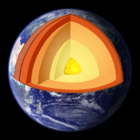Difference between revisions of "Material/Twenty most abundant elements in Earth's crust"
From AdCiv
< Material
| Line 6: | Line 6: | ||
! style="background:#E5E5E5;" width="150px" align="left" | Element !! style="background:#E5E5E5;" width="80px" align="right" | % mass | ! style="background:#E5E5E5;" width="150px" align="left" | Element !! style="background:#E5E5E5;" width="80px" align="right" | % mass | ||
|- | |- | ||
| − | | Oxygen|| align = "right" | 46.71 | + | | {{wp3|Oxygen}}|| align = "right" | 46.71 |
|- | |- | ||
| − | | Silicon|| align = "right" | 27.69 | + | | {{wp3|Silicon}}|| align = "right" | 27.69 |
|- | |- | ||
| − | | Aluminum|| align = "right" | 8.07 | + | | {{wp3|Aluminum}}|| align = "right" | 8.07 |
|- | |- | ||
| − | | Iron|| align = "right" | 5.05 | + | | {{wp3|Iron}}|| align = "right" | 5.05 |
|- | |- | ||
| − | | Calcium|| align = "right" | 3.65 | + | | {{wp3|Calcium}}|| align = "right" | 3.65 |
|- | |- | ||
| − | | Sodium|| align = "right" | 2.75 | + | | {{wp3|Sodium}}|| align = "right" | 2.75 |
|- | |- | ||
| − | | Potassium|| align = "right" | 2.58 | + | | {{wp3|Potassium}}|| align = "right" | 2.58 |
|- | |- | ||
| − | | Magnesium|| align = "right" | 2.08 | + | | {{wp3|Magnesium}}|| align = "right" | 2.08 |
|- | |- | ||
| − | | Titanium|| align = "right" | 0.62 | + | | {{wp3|Titanium}}|| align = "right" | 0.62 |
|- | |- | ||
| − | | Hydrogen|| align = "right" | 0.14 | + | | {{wp3|Hydrogen}}|| align = "right" | 0.14 |
|- | |- | ||
| − | | Phosphorus|| align = "right" | 0.13 | + | | {{wp3|Phosphorus}}|| align = "right" | 0.13 |
|- | |- | ||
| − | | Carbon|| align = "right" | 0.09 | + | | {{wp3|Carbon}}|| align = "right" | 0.09 |
|- | |- | ||
| − | | Manganese|| align = "right" | 0.09 | + | | {{wp3|Manganese}}|| align = "right" | 0.09 |
|- | |- | ||
| − | | Sulfur|| align = "right" | 0.05 | + | | {{wp3|Sulfur}}|| align = "right" | 0.05 |
|- | |- | ||
| − | | Barium|| align = "right" | 0.05 | + | | {{wp3|Barium}}|| align = "right" | 0.05 |
|- | |- | ||
| − | | Chlorine|| align = "right" | 0.05 | + | | {{wp3|Chlorine}}|| align = "right" | 0.05 |
|- | |- | ||
| − | | Chromium|| align = "right" | 0.04 | + | | {{wp3|Chromium}}|| align = "right" | 0.04 |
|- | |- | ||
| − | | Fluorine|| align = "right" | 0.03 | + | | {{wp3|Fluorine}}|| align = "right" | 0.03 |
|- | |- | ||
| − | | Zirconium|| align = "right" | 0.03 | + | | {{wp3|Zirconium}}|| align = "right" | 0.03 |
|- | |- | ||
| − | | Nickel|| align = "right" | 0.02 | + | | {{wp3|Nickel}}|| align = "right" | 0.02 |
|} | |} | ||
| Line 52: | Line 52: | ||
Notable missing from top 20: | Notable missing from top 20: | ||
| − | *Copper.<br><small>Carbon might replace copper for many electrical (and thermal) conduction applications - see [http://www.unidym.com/technology/cnt_property_electrical.html], [http://www.scienceblog.com/cms/ub-engineers-prove-carbon-nanotubes-are-superior-metals-electronics-19679.html] and {{wp|Carbon_nanotube|carbon nanotube}} for further information</small> | + | * {{wp3|Copper}}.<br><small>Carbon might replace copper for many electrical (and thermal) conduction applications - see [http://www.unidym.com/technology/cnt_property_electrical.html], [http://www.scienceblog.com/cms/ub-engineers-prove-carbon-nanotubes-are-superior-metals-electronics-19679.html] and {{wp|Carbon_nanotube|carbon nanotube}} for further information</small> |
Revision as of 23:50, 11 January 2010
Approx figures for the 20 most abundant elements in Earth's crust:
| Element | % mass |
|---|---|
Oxygen  |
46.71 |
Silicon  |
27.69 |
Aluminum  |
8.07 |
Iron  |
5.05 |
Calcium  |
3.65 |
Sodium  |
2.75 |
Potassium  |
2.58 |
Magnesium  |
2.08 |
Titanium  |
0.62 |
Hydrogen  |
0.14 |
Phosphorus  |
0.13 |
Carbon  |
0.09 |
Manganese  |
0.09 |
Sulfur  |
0.05 |
Barium  |
0.05 |
Chlorine  |
0.05 |
Chromium  |
0.04 |
Fluorine  |
0.03 |
Zirconium  |
0.03 |
Nickel  |
0.02 |
Figures from [1]
Figures rounded to two decimal places
Also need to have a list based on ease of extraction and energy required
Notable missing from top 20:
- Copper
 .
.
Carbon might replace copper for many electrical (and thermal) conduction applications - see [2], [3] and carbon nanotube for further information
for further information

